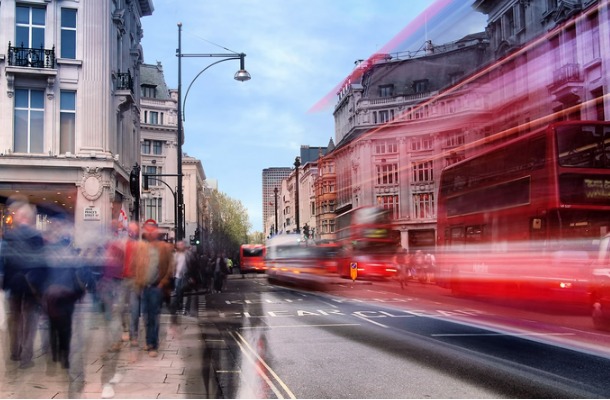
Issue 3 | Article 14
ABSTRACT
Prior to the COVID-19 pandemic, many business persons believed, and many academics hypothesised, that digital technology was sufficiently advanced for working from anywhere to be a viable business option. The author of this article, aware of the persuasive power of empirical evidence, decided to test this hypothesis by moving to a distant location and carrying out his work duties in a new and unfamiliar work setting. He concludes that his experience supports the validity of the hypothesis: working from anywhere is viable.
INTRODUCTION
The challenge was laid down. A digital convict wanted to experience the notion of being a digital nomad working from anywhere (WFA) and decided to choose a remote location (London) as part of the experiment.
Q. Why on earth would a greying, digital native travel essentially to the other side of the world (London) to test out the theory that Working from Anywhere (WFA) is in fact a viable option?
A. Because he could!
Q. And why London?
A. It was sufficiently far enough away to test the limits of the project and further, what better place for a digital convict of British heritage.
GETTING ORGANISED PRIOR TO DEPARTURE
The adventure began with the careful inclusion of the essential technologies for the experiment – a laptop (with the appropriate accesses) in this case a Lenovo Think Book 15 Gen 4; a Logitech wireless mouse and keyboard combination; a Logitech BCC950 Conference Cam; large Sasco event calendar (old school); and iPhone; a notebook (also old school); a tri-screen; and a London underground mousepad (not essential, but provides great comfort when you are looking to find your way around the city).
In some ways so simple – despite having to jettison a few bits of clothing to ensure falling below the maximum baggage allowance – the preparation was very straight forward.
GETTING ORGANISED ON ARRIVAL
On arrival it was essential to quickly establish a space to work from with good light and access. A quality WIFI setup is essential – and most rental apartments/hotels have this facility available – in fact it was the number one pre-requisite for actually selecting a venue to stay.
For an emergency scenario – the closest WEWORK option was identified – just in case. These facilities are dotted throughout the CBD of London and provide a most useful fall back in case the planned resources cause any trouble. A virtual office will set you back about AUD$500 a month – not a bad option to be honest.
GETTING YOUR HEAD AROUND THE TIME DIFFERENCE
In many ways this was the hardest issue of all. There is a 9 hour difference (behind) between London and Sydney/Melbourne creating the need for an early start each morning (4am London time) and working through to mid-morning (9am London time). This provided a 1pm to 6pm window with colleagues on the other side of the world.
Real time interaction was important and this was achieved through email, sms, WhatsApp, TEAMS and Zoom. The immediacy of response was always impressive – and this made a major contribution to avoiding any sense of isolation.
This challenge was not particularly difficult – the constant reference to time calculation, on the other hand, was a minor challenge – but quite doable nevertheless. The laptop was set for Sydney/Melbourne time – and the mobile phone setting was London time. This assisted enormously.
REFLECTIONS OF A NEW DIGITAL NOMAD
In all, the establishment of a work space was very straight forward. Natural lighting is important, though this can be augmented with artificial lighting (lamps and the like) to quite a good level for video conferencing.
Good speed WIFI is essential – and was in fact not an issue.
Adjusting to the different time zone was also straight forward. Ideally landing in London on the weekend was a solid step. This gave time to adjust the body clock ready for operations on the Monday morning. This is highly recommended.
In all – I highly recommend the notion of WFA. The life of a digital nomad is not as remote as first thought.
REFERENCES
Courtney, E. (2021) The benefits of working from home.
https://www.flexjobs.com/blog/post/benefits-of-remote-work/
Financial Times (2021). Digital nomads: the reality of running a business from anywhere.
https://www.ft.com/content/d54b6064-397d-4fea-ad61-2d24c0e00c32
Financial Times (2021). I tried remote working from this subtropical island. Don’t get too jealous.
https://www.ft.com/content/231c6d32-11bd-4035-84e1-14d93417941a
Globalization Partners (2021). What are employees looking for in a remote work environment?
https://www.globalization-partners.com/
BIOGRAPHY

Emeritus Professor Greg Whateley is the Deputy Vice Chancellor and Vice President (Academic) – Group Colleges Australia (GCA). Formerly, he was Chair of the Academic Board at the Australian Institute of Music and Dean of the College at Western Sydney University. He has been keenly interested in alternative modes of delivering education since 2000 when he and Professor Bofinger founded ‘The Virtual Conservatorium’. Now, some 20 years later, he is deeply involved in the development of the virtual school.




